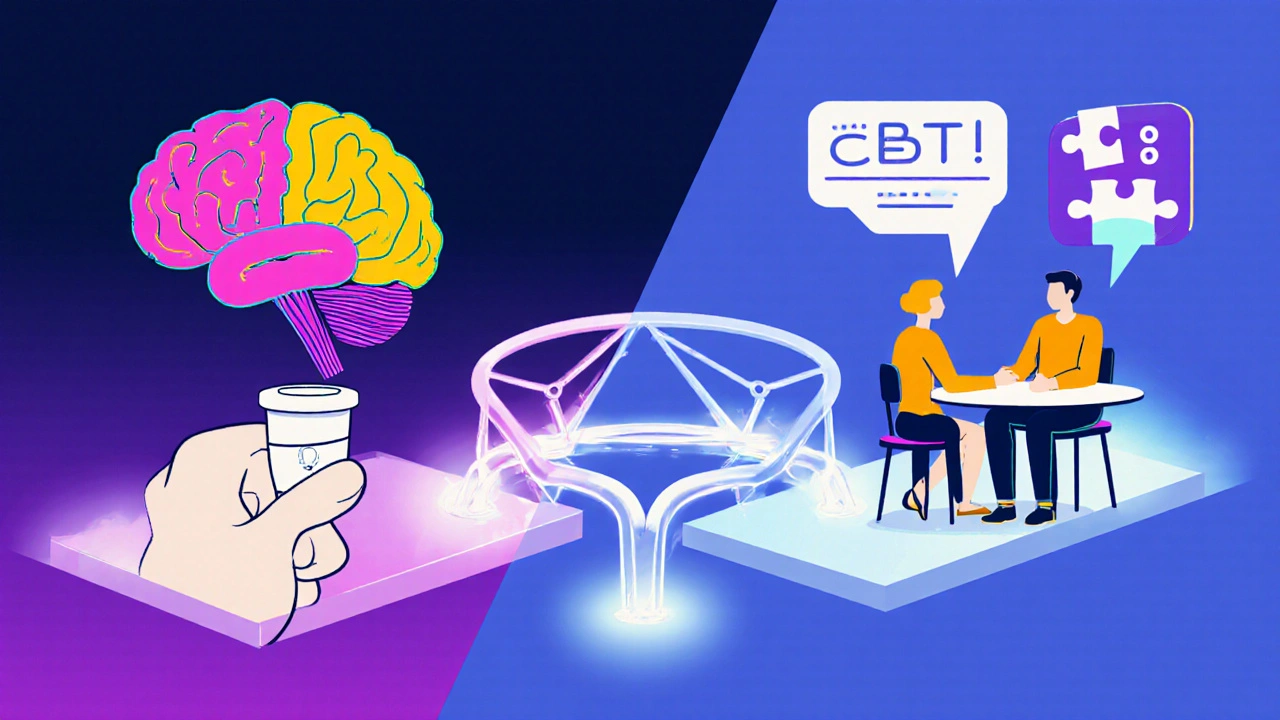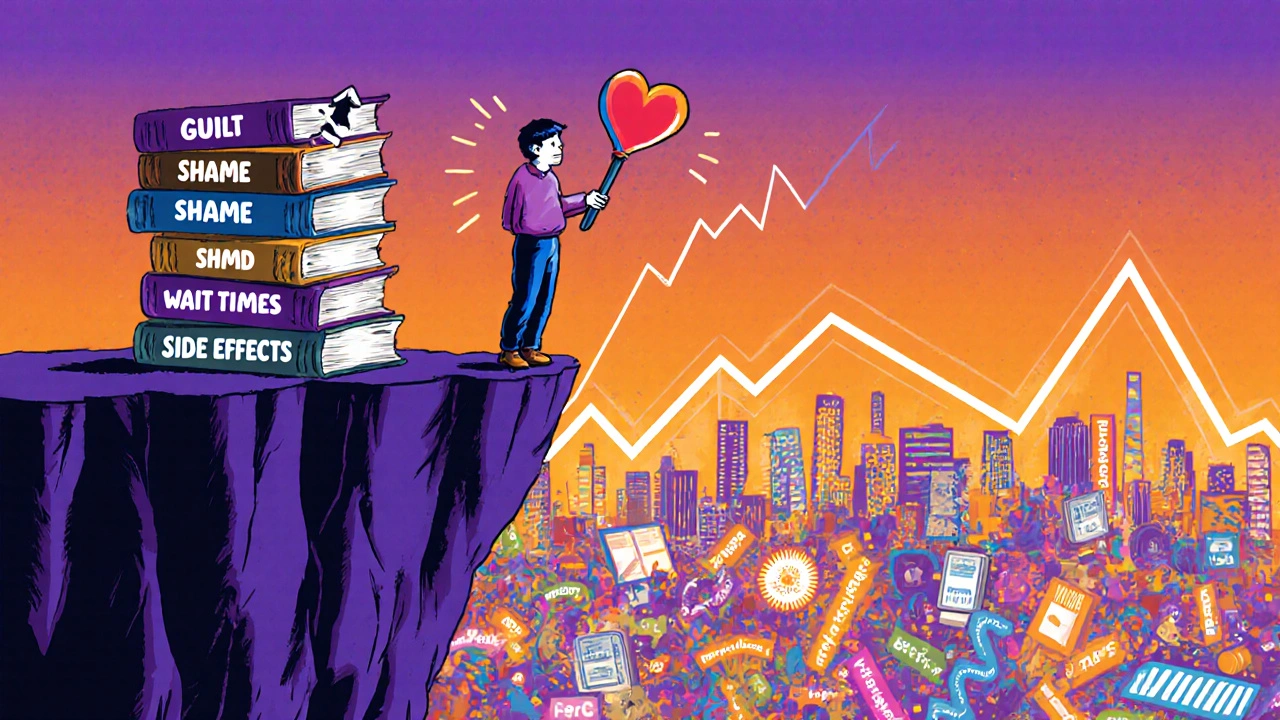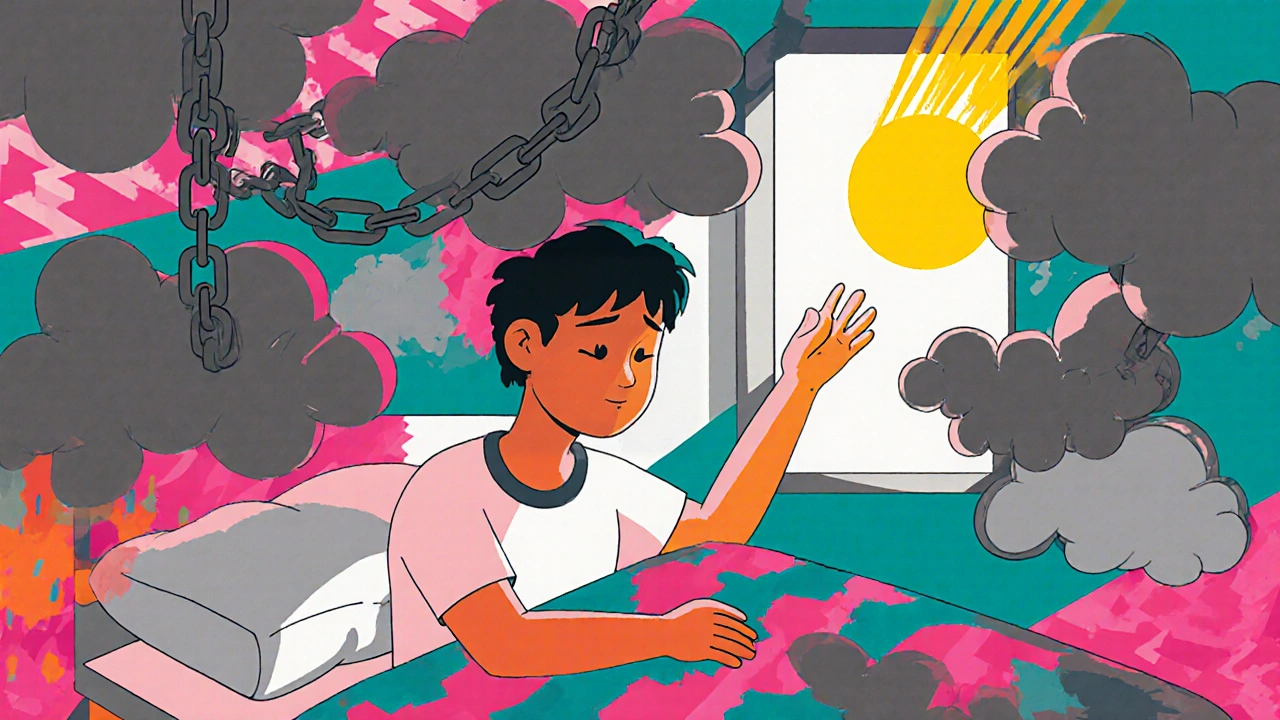When you're stuck in a fog that won't lift-no matter how hard you try to shake it-you're not just feeling sad. You're living with major depressive disorder (MDD). It's not weakness. It's not laziness. It's a real, measurable brain condition that affects about 1 in 6 U.S. adults every year, according to the National Alliance on Mental Illness. And here’s the truth: you don’t have to suffer through it alone. Effective treatments exist. But choosing the right one isn’t simple. It’s personal. It’s messy. And it matters more than you think.
What Major Depressive Disorder Really Feels Like
MDD isn’t just a bad week. It’s a persistent low mood that lasts two weeks or longer, with no clear reason. You lose interest in things you used to love-coffee, music, hanging out with friends. You might sleep too much or too little. You feel heavy, even when lying down. Some days, getting out of bed feels like climbing a mountain. And it’s not just in your head. Brain scans show real changes in activity and chemistry. This isn’t something you can just ‘think positive’ your way out of.
It doesn’t always start after a breakup or a job loss. Sometimes, it just shows up. No warning. No trigger. That’s what makes it so confusing-and so isolating. People tell you to ‘snap out of it.’ But you can’t. And that guilt? That’s part of the illness too.
Two Main Paths Forward: Medication and Therapy
There are two well-researched, evidence-backed ways to treat MDD: antidepressants and psychotherapy. And the good news? Both work. But they work differently.
Antidepressants target the brain’s chemistry. They help restore balance in neurotransmitters like serotonin and norepinephrine-chemicals that affect mood, sleep, and energy. Psychotherapy, on the other hand, works on your thoughts, behaviors, and relationships. It helps you understand why you feel the way you do-and gives you tools to change it.
Studies show they’re about equally effective on their own. But when you combine them? That’s where the biggest improvements happen. For moderate to severe depression, the combination of medication and therapy is often the most powerful option.
Antidepressants: What’s Actually Prescribed
Not all antidepressants are the same. First-line options today are mostly second-generation drugs-meaning they’re safer and have fewer side effects than older ones. The most common are SSRIs (Selective Serotonin Reuptake Inhibitors) and SNRIs (Serotonin and Norepinephrine Reuptake Inhibitors).
SSRIs like escitalopram, sertraline, and paroxetine are often the first choice for mild to moderate depression. They’re well-tolerated, and most people can stick with them. But they don’t work instantly. You might feel worse before you feel better. Nausea, insomnia, or sexual side effects can show up in the first few weeks. That doesn’t mean you should quit. It often gets better. But if it doesn’t? Talk to your doctor. There are other options.
SNRIs like venlafaxine and duloxetine are stronger. They’re often used when SSRIs don’t work or when depression is severe. They can help with physical symptoms like chronic pain, too. Then there’s mirtazapine and amitriptyline-older but still effective. Mirtazapine can help with sleep and appetite, which is a plus for people who’ve lost both.
It takes time. Most people start to notice small changes in two to four weeks. Full effects? Usually around eight to twelve weeks. Patience is hard when you’re in pain. But rushing off medication too soon is one of the biggest reasons people relapse.
Psychotherapy: More Than Just Talking
Therapy isn’t about venting. It’s about learning. And the most effective types are structured, time-limited, and backed by decades of research.
Cognitive Behavioral Therapy (CBT) is the gold standard. It helps you spot the automatic negative thoughts that feed depression-like ‘I’m a failure’ or ‘Nothing will ever get better.’ Then it teaches you to question them. You don’t just think differently. You act differently. You do homework. You track your mood. You challenge avoidance. It’s work. But people who stick with it say it changes their lives. One person on Reddit said, ‘CBT taught me skills I still use five years later.’
Behavioral Activation is a simpler version of CBT. It’s perfect for people who feel too drained to even start. The idea? Do one small, pleasant thing each day-even if you don’t feel like it. Walk around the block. Call a friend. Listen to a song you used to love. It sounds basic, but it breaks the cycle of withdrawal that keeps depression locked in.
Interpersonal Therapy (IPT) focuses on relationships. Maybe you’re grieving a loss. Maybe you’re stuck in a toxic relationship. Maybe you’ve lost your sense of identity after a big life change. IPT helps you repair connections and rebuild your social support. It’s especially helpful if your depression is tied to life events.
Acceptance and Commitment Therapy (ACT) doesn’t try to ‘fix’ your thoughts. It teaches you to make space for them. You learn to accept that painful feelings are part of being human-and still move toward what matters to you. It’s not about feeling happy. It’s about living fully, even when you’re hurting.

What About Online Therapy?
Computerized CBT (CCBT) is growing fast. Apps and online programs deliver CBT through videos, exercises, and automated feedback. They’re great for people in rural areas, those with mobility issues, or anyone who can’t find a therapist nearby. Some insurance plans now cover them.
But they’re not for everyone. You need to be motivated. You need to be comfortable with technology. And you miss the human connection-the empathy, the timing, the way a good therapist notices when you’re holding back. CCBT works best as a supplement, not a replacement.
When Medication Alone Isn’t Enough
One in three people don’t respond to the first antidepressant they try. That’s not failure. It’s science. If one drug doesn’t work, another might. Switching medications or adding a second one (like lithium or thyroid hormone) can help. This is called augmentation.
For severe, treatment-resistant depression, Electroconvulsive Therapy (ECT) is still the most effective option. It sounds scary, but it’s safe and done under anesthesia. You get a brief, controlled seizure. It resets brain activity. Many people report dramatic improvement after just a few sessions. It’s not a last resort-it’s a powerful tool.
Combining Therapy and Medication: The Best of Both
Why combine them? Because they attack depression from two sides.
Medication helps lift the fog so you have the energy to do the work of therapy. Therapy gives you the skills to stay well after the medication is stopped. One study found that people who got both were 30% less likely to relapse within a year than those who got just one.
And the benefits last. Medication helps you feel better now. Therapy helps you stay better later. That’s why experts say combination therapy is the standard for moderate to severe MDD.

What Stops People From Getting Help?
Cost. Wait times. Shame. Side effects.
Waiting lists for therapy can be months long. In rural areas, there might not be a therapist within 50 miles. Insurance often covers meds better than talk therapy. And stigma? Still real. People fear being labeled ‘crazy’ or ‘weak.’
Side effects from antidepressants are a big reason people quit. Nausea. Weight gain. Low sex drive. Emotional numbness. One user wrote, ‘SSRIs made me emotionally numb but functional.’ That’s a trade-off some make. But it shouldn’t be the only option.
And here’s the hard truth: therapy doesn’t work if you don’t show up. If you skip sessions. If you don’t do the homework. It’s not magic. It’s practice. Like physical therapy for your mind.
How to Start
You don’t need to have it all figured out. Start small.
- See your primary care doctor. They can screen you for depression and start you on an SSRI if needed.
- Ask for a referral to a therapist. Many clinics now offer same-week appointments.
- Check if your insurance covers online CBT programs. Some are free or low-cost.
- Call the NAMI Helpline (800-950-6264) or text ‘NAMI’ to 62640. They’ll help you find local resources.
If you’re in crisis, call or text 988. That’s the Suicide & Crisis Lifeline. It’s free, confidential, and available 24/7.
What to Expect in the First Few Weeks
Week 1-2: You might feel worse. Medication side effects kick in. Therapy feels awkward. That’s normal.
Week 3-4: Tiny shifts. You sleep a little better. You laugh once. You get out of bed without a fight. These are wins.
Week 5-8: You start to notice patterns. ‘I feel worse after scrolling for hours.’ ‘I feel better after walking.’ You’re learning.
Week 12+: You’re not ‘cured.’ But you’re not drowning either. You have tools. You have support. You’re managing.
Recovery isn’t linear. Some days you’ll feel like you’re back at square one. That’s okay. Progress isn’t about perfection. It’s about showing up-even when it’s hard.
Final Thought: You’re Not Broken
Major depressive disorder doesn’t mean you’re weak. It means your brain is struggling. And like any illness, it needs the right treatment. You don’t have to choose between meds and therapy. You don’t have to suffer in silence. There are real, proven ways out. And you deserve to find them.

